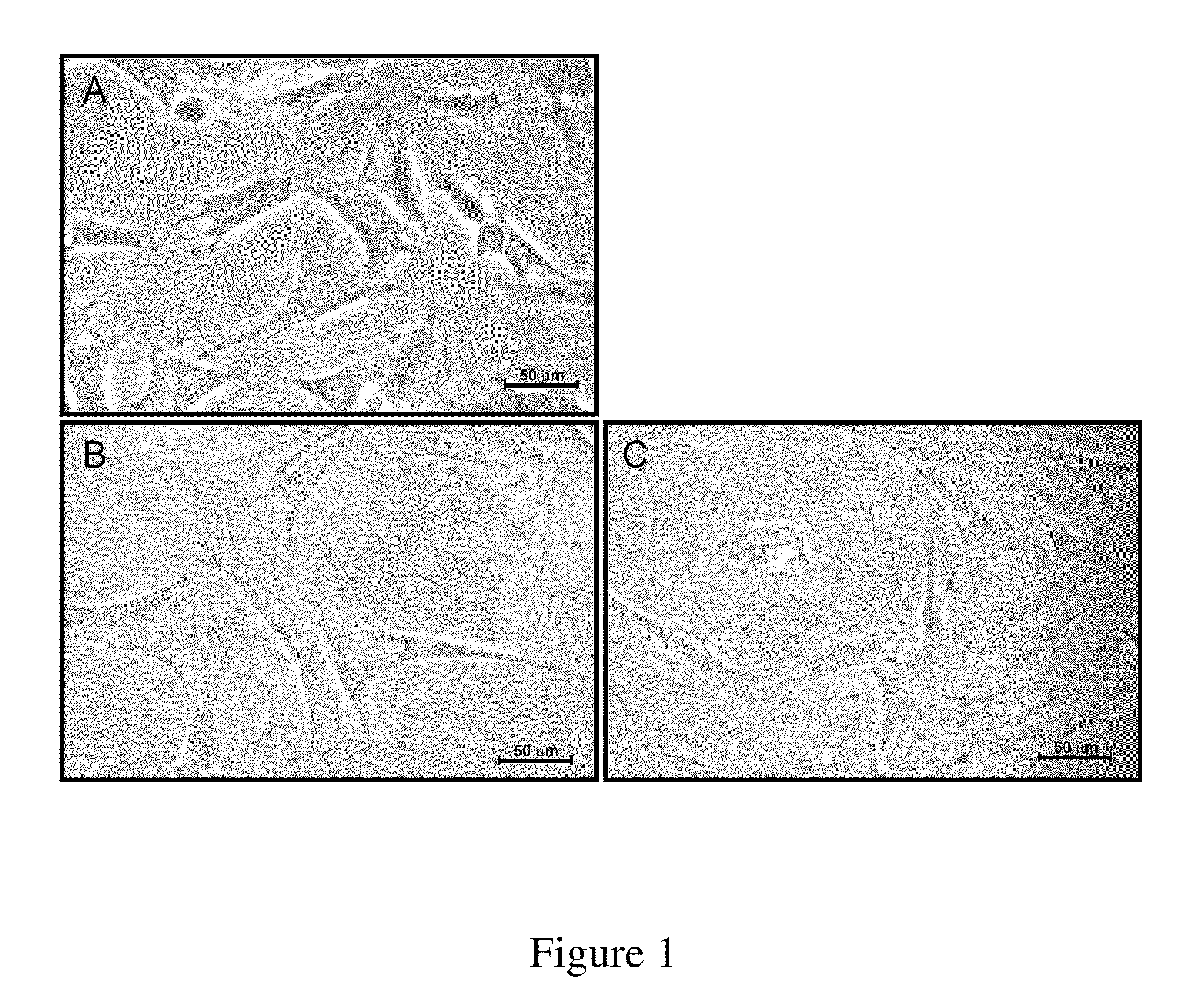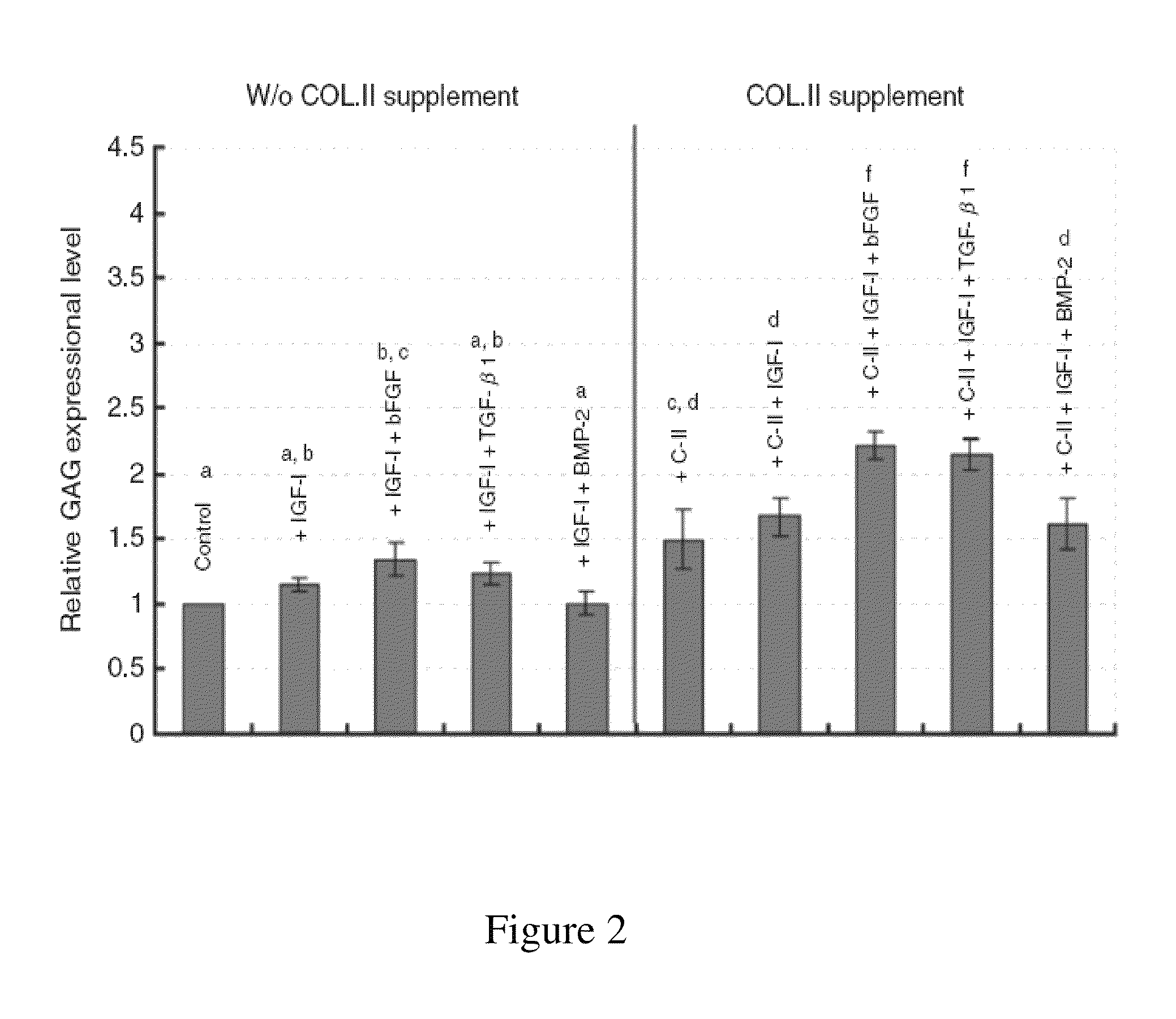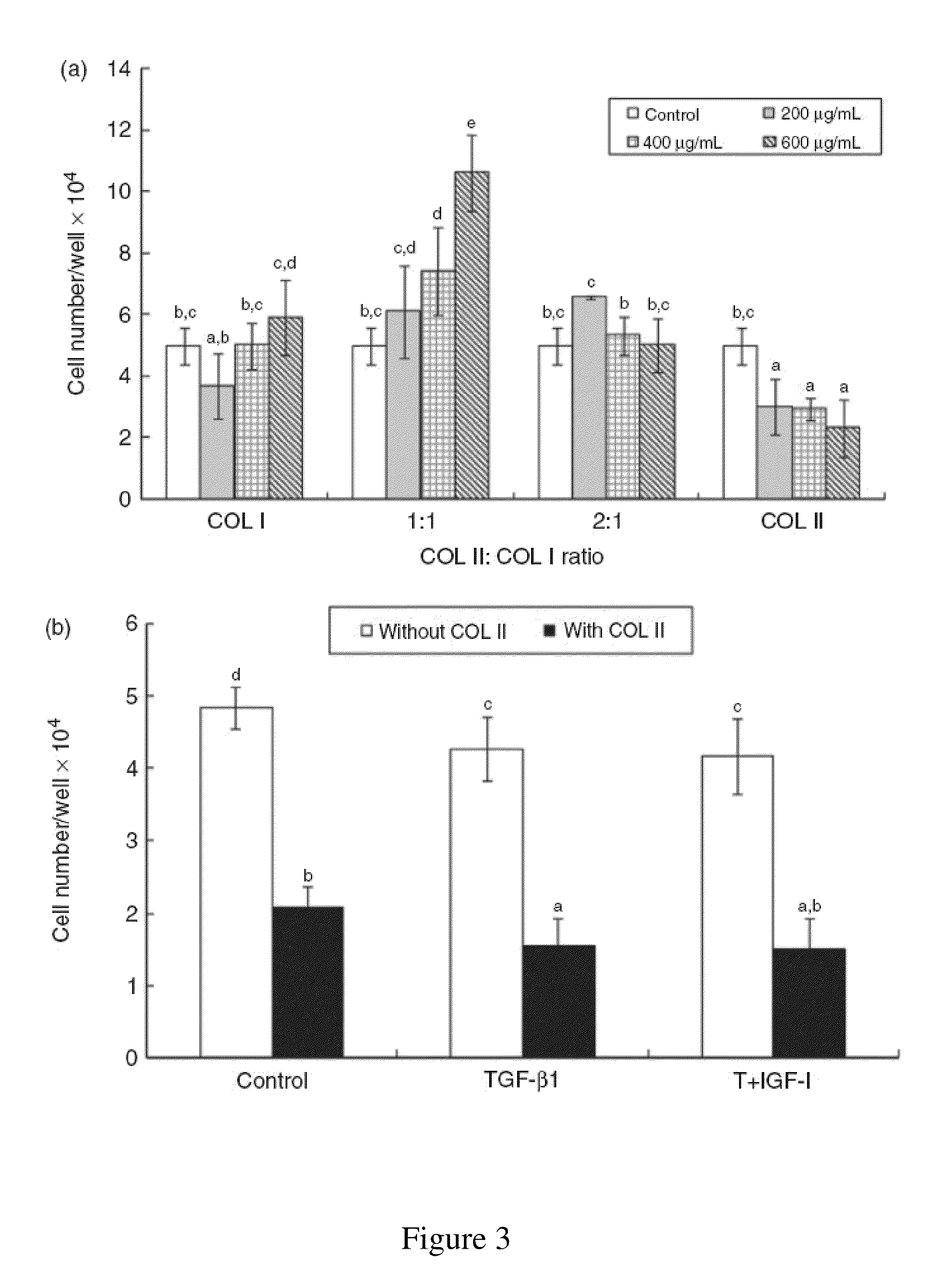Method to restore cartilaginous phenotype of chondrocytes after cultured and expanded in vitro
a cartilaginous phenotype and chondrocyte technology, applied in the field of restoring the cartilaginous phenotype of chondrocytes after culture and expansion in vitro, can solve the problems of limited source of normal tissues or cells, restricting the development and clinical application of cell-based therapies, and serious physical debilitation, so as to achieve the effect of restoring the “dedifferentiated” chondrocyte and reducing experimental variability
- Summary
- Abstract
- Description
- Claims
- Application Information
AI Technical Summary
Benefits of technology
Problems solved by technology
Method used
Image
Examples
example 1
Chondrocyte Morphology & Responses to Various Combinations of Growth Factors
[0053]FIG. 1A shows that P1 chondrocytes appeared polygonal in shape and small in size. In the presence of type II collagen (COL II), stratification was formed in COL II-treated groups, probably through complex cell-matrix interaction. Noteworthy, P9 rabbit chondrocytes cultured in media containing exogenous COL II appeared predominantly polygonal or fibroblast-like (FIG. 1B). However, P9 cells without COL II-supplement became greatly enlarged in size, flattened down on substratum and fully extended, considered as ‘rag-like’ in general appearance (FIG. 1C).
[0054]The effects of combination with cartilaginous growth factors on the induction of GAG expression in rabbit chondrocytes were screened in this study. As this was a preliminary survey, P4 chondrocytes were used. The results were summarized in FIG. 2. In the absence of type II collagen (w / o COL II supplement group), only the treatment of cells with IGF-I...
example 2
Effects of Type II Collagen on Chondrocyte Proliferation
[0056]Among P9 chondrocytes treated with different compositions of ECM components, type I collagen (COL I) alone exhibited little effect on cell proliferation rate except at 600 μg / ml. The effect of combining COL II with COL I at 1:1 ratio on cell proliferation was stimulatory at all three matrix concentrations studied and appeared dose-dependent. At the concentration of 600 μg / ml, the P9 chondrocyte proliferation rate was up to 2.2 folds. In COL II combined with COL I at a ratio of 2:1 group, no significant effect on total cell number were observed when high concentrations of collagen were added. On the contrary, in COL II alone group, COL II greatly inhibited cell proliferation rate at all added concentrations. The final cell number was reduced to 60% and 46%, respectively, of that in the control group when the exogenous COL II concentrations rose from 200 to 600 μg / ml (FIG. 3A).
[0057]On the other hand, the proliferation rate...
example 3
Effects of Type II Collagen on Chondrocytes Glycosaminoglycan Level
[0058]In the group of COL II alone or COL II:COL I at a ratio of 2:1, total GAG levels of P9 chondrocytes were greatly increased up to several folds (3.7 to 4.4 or 2.2 to 3.8 folds, respectively) at all 3 collagen concentrations ranged from 200 to 600 μg / ml (FIG. 4). Nevertheless, in the presence of COL I alone, the total GAG levels of P9 chondrocytes increased only about 1.8 to 2.6 folds with a reverse dose effect. Various concentrations of COL II:COL I at 1:1 ratio also stimulated total GAG levels of chondrocytes to around 1.8 to 2.3 folds (FIG. 4).
[0059]As shown in FIG. 5, both TGF-β1 and TGF-β1 plus IGF-I affected total GAG levels of P9 chondrocytes in the absence of COL II. On the other hand, in the presence of COL II, TGF-β1 alone slightly but significantly reduced GAG level while IGF-I plus TGF-β1 greatly increased GAG level from that of the TGF-β1 group or COL II alone group. The data clearly demonstrated tha...
PUM
| Property | Measurement | Unit |
|---|---|---|
| concentration | aaaaa | aaaaa |
| concentration | aaaaa | aaaaa |
| concentration | aaaaa | aaaaa |
Abstract
Description
Claims
Application Information
 Login to View More
Login to View More - R&D
- Intellectual Property
- Life Sciences
- Materials
- Tech Scout
- Unparalleled Data Quality
- Higher Quality Content
- 60% Fewer Hallucinations
Browse by: Latest US Patents, China's latest patents, Technical Efficacy Thesaurus, Application Domain, Technology Topic, Popular Technical Reports.
© 2025 PatSnap. All rights reserved.Legal|Privacy policy|Modern Slavery Act Transparency Statement|Sitemap|About US| Contact US: help@patsnap.com



